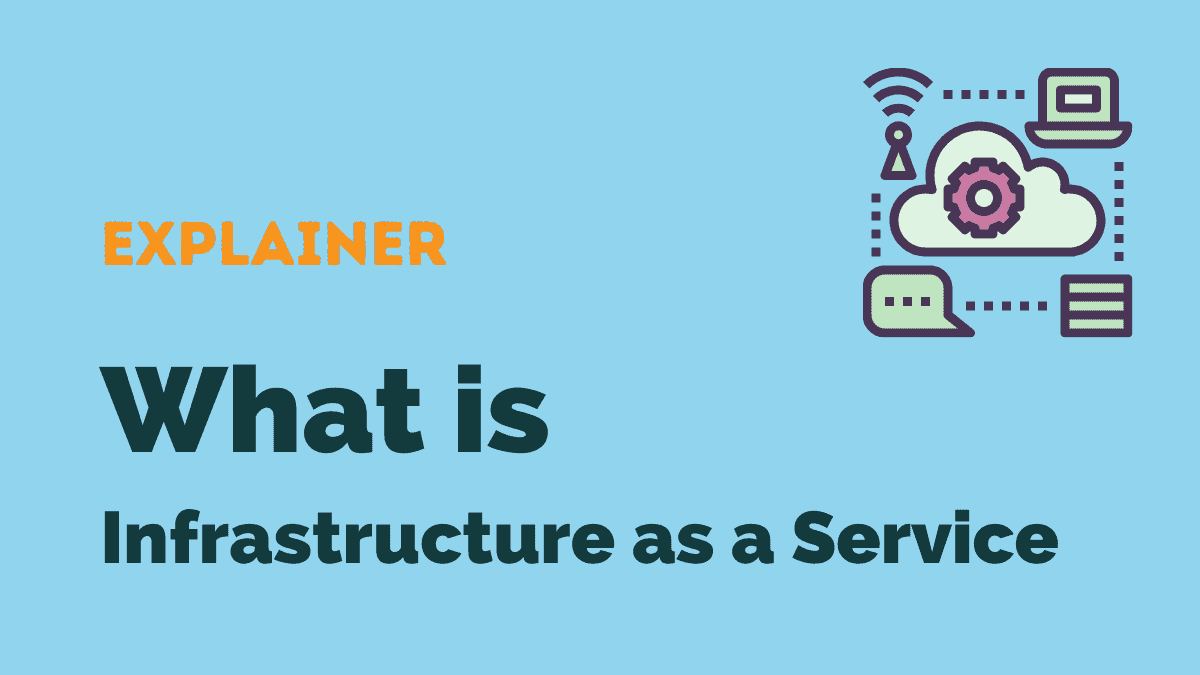In this post:
- What does “Infrastructure” Mean?
- What does “as a Service” Mean?
- How can IaaS Improve Customer Experience?
- How does IaaS Differ from PaaS and SaaS?
IaaS stands for Infrastructure as a Service. It is a type of computing which enables multiple users to access cloud applications via the internet.
To fully get to grips with IaaS, let’s split the acronym into two; “infrastructure” and “as a service”.
What does “Infrastructure” Mean?
There are three facets within “infrastructure”, which enable cloud applications to function.
These are:
- Servers – These provide computing power. High-speed graphics processing units (GPUs) enable users to download specific workloads, such as machine learning and AI applications. High-performance computing capabilities enhance the functionality of these workloads.
- Storage – Different IaaS solutions have alternative storage capabilities, depending on their use. Most commonly, there is “object storage”, which accumulates pictures and documents. It also stockpiles data and graphics from the server. However, there is “block” and “file” storage too.
- Network – The network holds servers and storage together. Large networks, which offer many gigabits per second and high bandwidth, allow more data to pass through the system.
When it comes to paying for the infrastructure, “network” has special significance. Why? Because the more data that passes through the system, the more money users will pay.
Here is where the “aaS” comes in.
What does “as a Service” Mean?
“as a Service” refers to how users purchase the infrastructure. Instead of contracts and hefty license fees, the technology provider bills per hour/day/month.
The beauty of such a solution is that users only pay while the solution drives value. So, if the user chooses to only use a tool for a couple of months, the vendor only charges for two months. There is no need to buy the solution indefinitely.
Other excellent functions of “aaS” solutions include: providing a multi-tenant environment and being available to buy via self-service. Users can purchase, configure and consume them via the internet. In most cases, IaaS solutions are ready within minutes or hours.
How Can IaaS Improve Customer Experience?
Traditionally, contact centers have kept all their telephony on-premise. Having these systems within the confines of the company walls provides a sense of security. Nevertheless, operations are increasingly switching to “aaS” solutions.
The pandemic was a significant factor in pushing this trend forwards. Enabling employees to work from anywhere, IaaS allows fast disaster recovery.
After migrating, contact centers realize many other benefits. These include; cost-efficiency, the ability to scale to demand, and easy access to customer data.
In terms of CX, arguably the most beneficial is the easy API integrations that IaaS software enables. Businesses can connect technologies – across the company – to maximize their data pools, extract insights, and speed up digital transformation.
Doing so allows companies to meet new customer expectations.
How does IaaS Differ from SaaS?
Despite the CX benefits of IaaS, it is the first generation of cloud computing. The field is continuously evolving. As such, platform as a service (PaaS) and software as a service (SaaS) technologies have emerged.
SaaS now forms the basis of most contact center technologies. The following table suggests why.
| IaaS | PaaS | SaaS | |
| Hardware | ✓ | ✓ | ✓ |
| Virtualisation | ✓ | ✓ | ✓ |
| OS | x | ✓ | ✓ |
| Runtime | x | ✓ | ✓ |
| Data | x | x | ✓ |
| Application | x | x | ✓ |
With IaaS solutions, the vendor offers remote support – in terms of hardware and virtualization. However, with SaaS, the provider also covers OS, runtime, data, and application.
As well as this, SaaS solutions enable companies to realize all the CX benefits that come part and parcel with IaaS solutions.
Looking to upgrade from on-premise software to SaaS? Our cloud platform is ideal for improving contact center performance.





